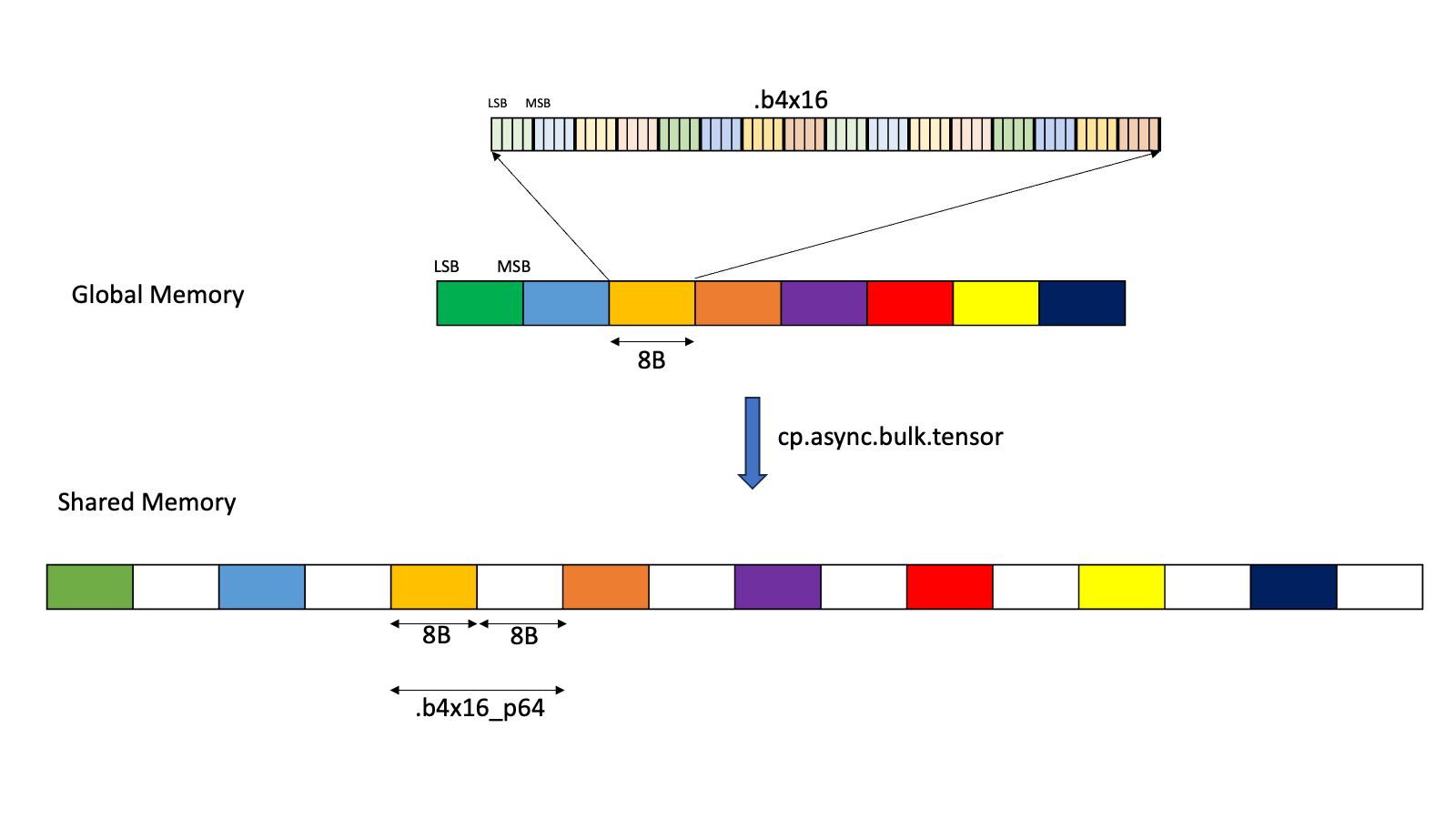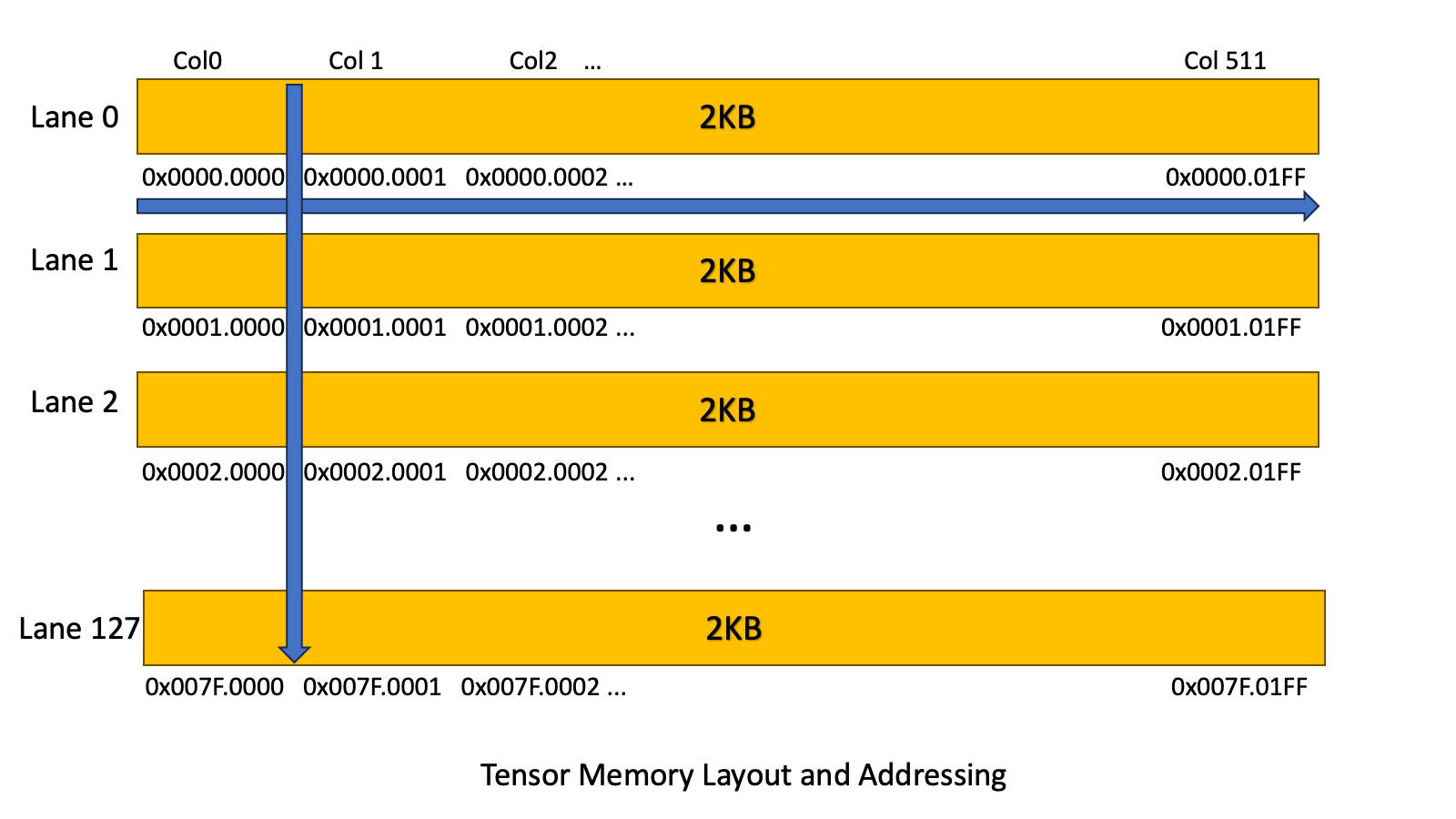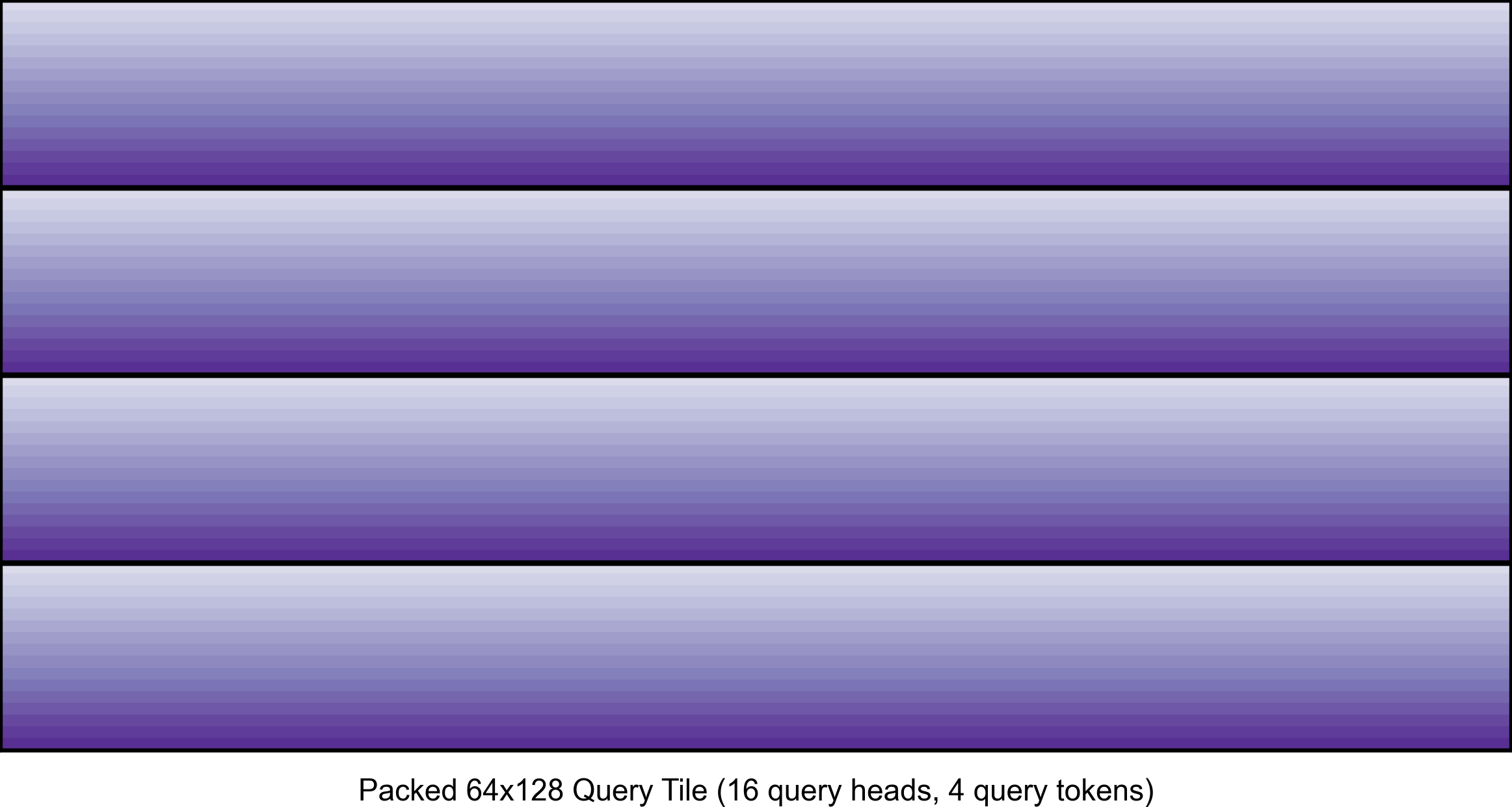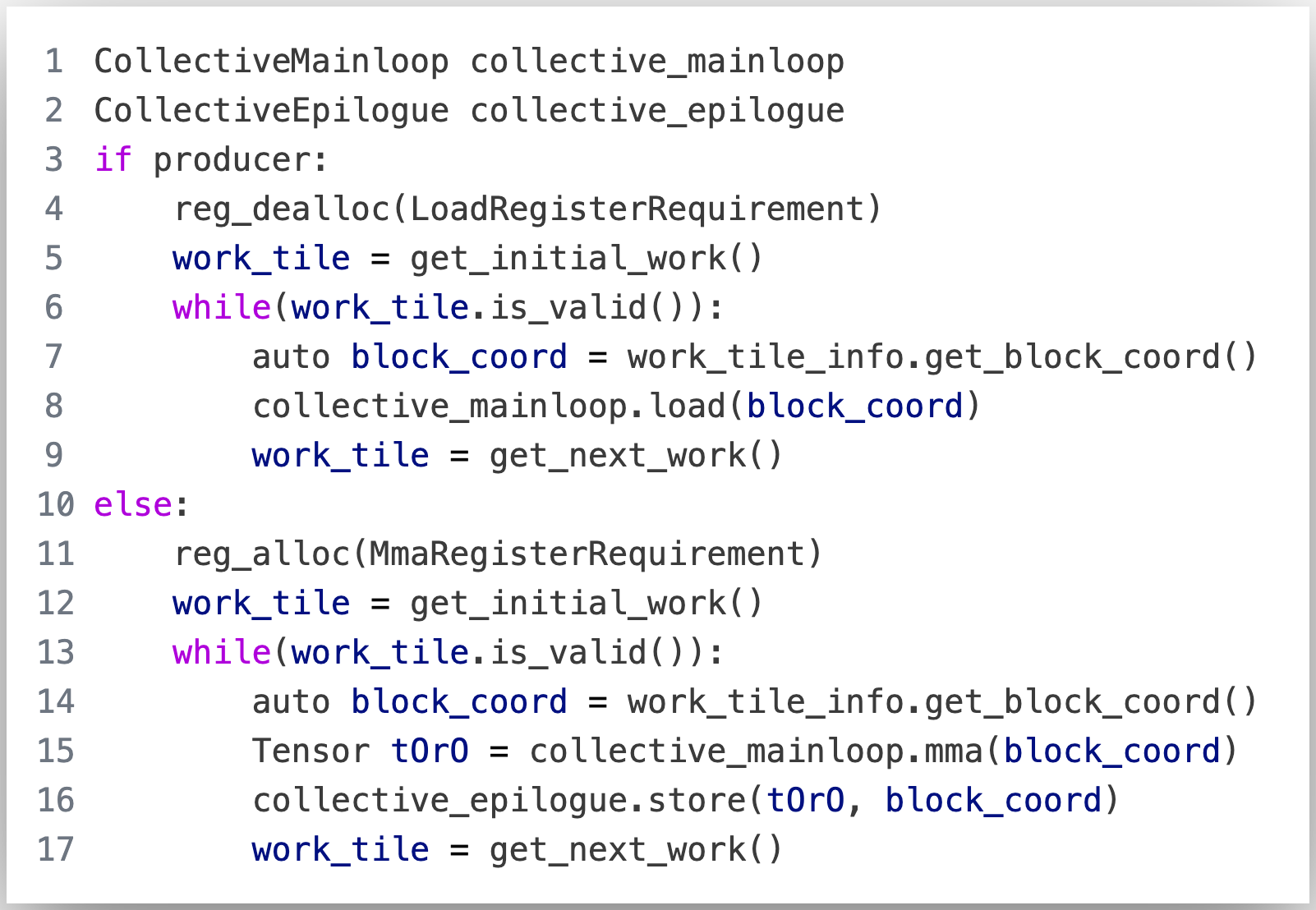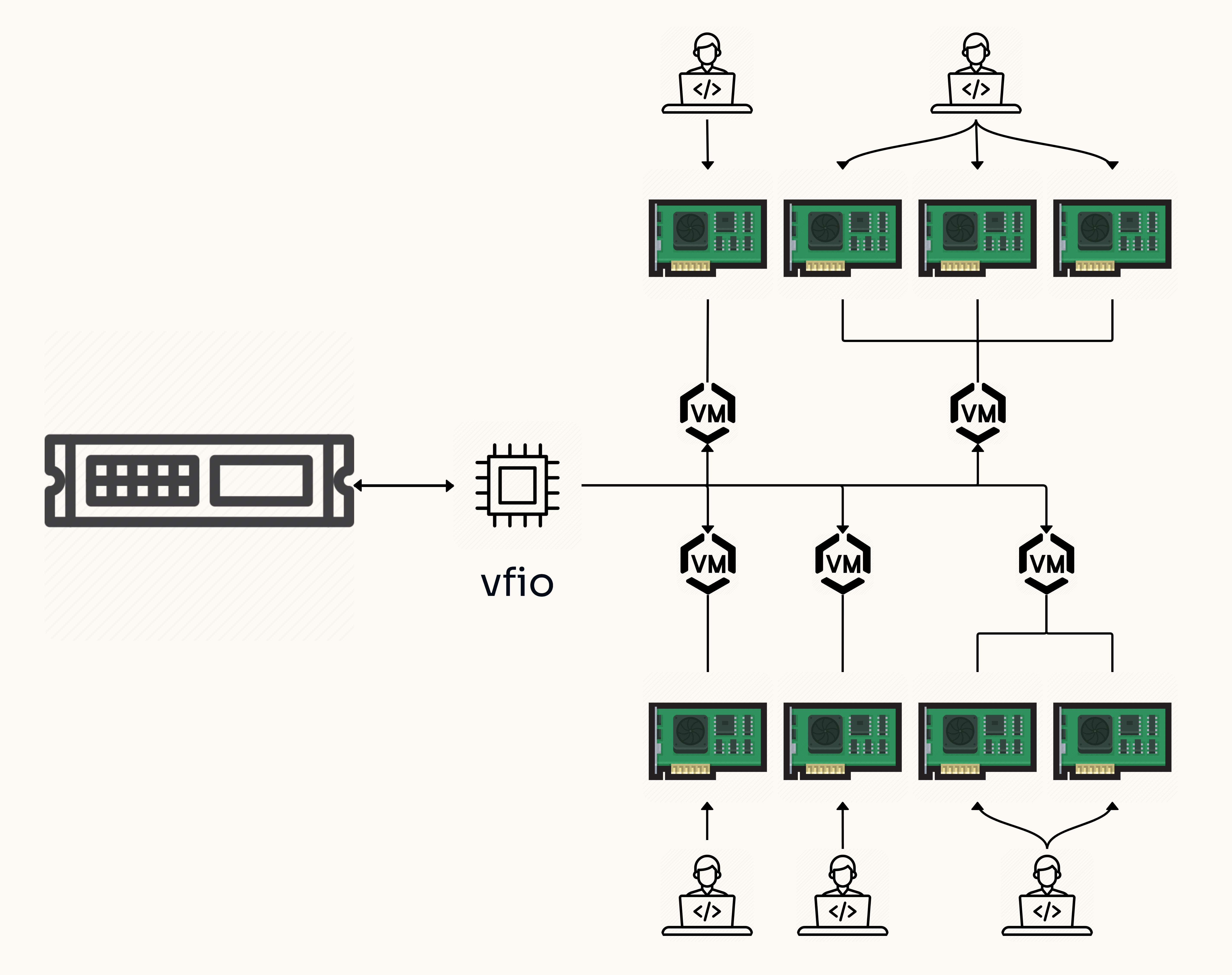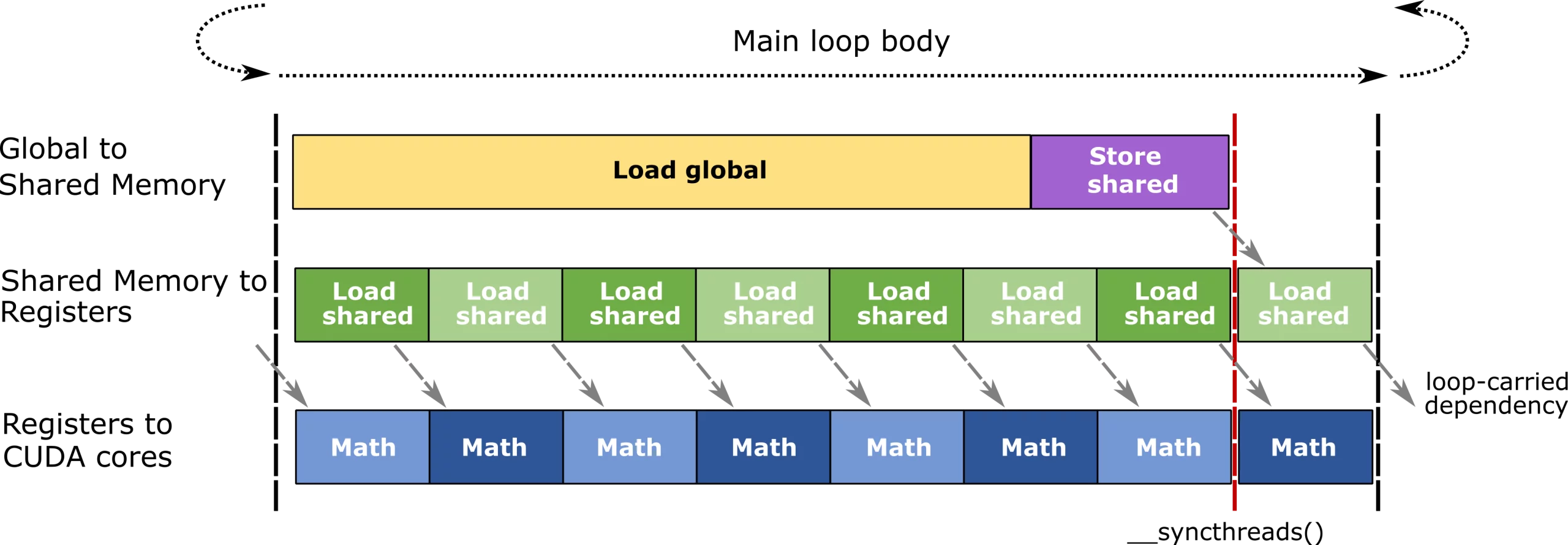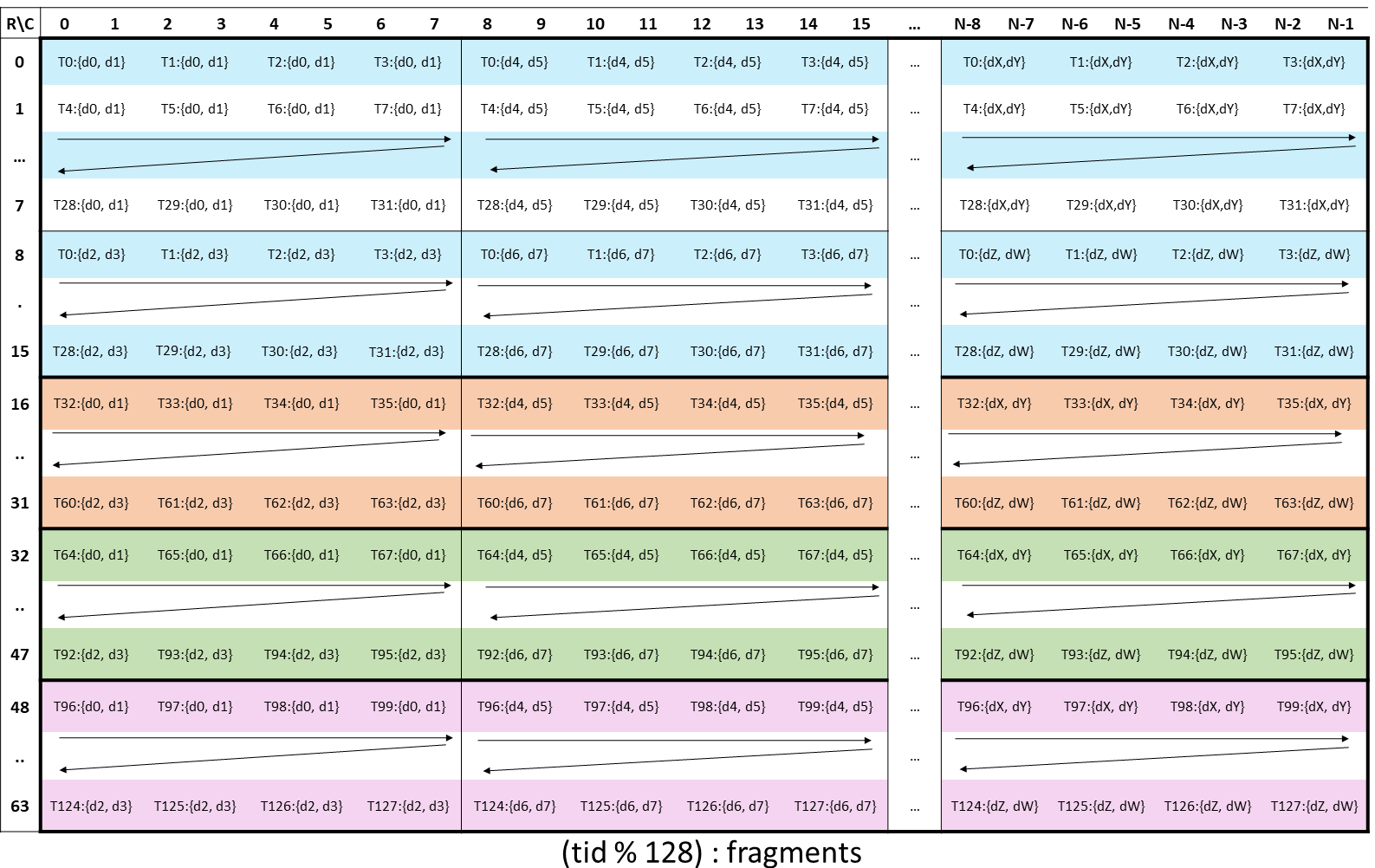Category: Publications
-
CUTLASS Tutorial: Sub-byte GEMM on NVIDIA® Blackwell GPUs
Welcome to part 3 of our series investigating GEMM on the NVIDIA Blackwell architecture. In parts 1 and 2, we looked at the Tensory Memory and 2 SM capabilities of the new Blackwell Tensor Core UMMA instructions and how to work with them in CUTLASS. In this part, we introduce low-precision computation and then discuss… Go to article…
-
CUTLASS Tutorial: GEMM with Thread Block Clusters on NVIDIA® Blackwell GPUs
Welcome to part two of our series investigating GEMM on the NVIDIA Blackwell architecture. In part 1, we introduced some key new features available on NVIDIA Blackwell GPUs, including Tensor Memory, and went over how to write a simple CUTLASS GEMM kernel that uses the new UMMA instructions (tcgen05.mma) to target the Blackwell Tensor Cores.… Go to article…
-
CUTLASS Tutorial: Writing GEMM Kernels Using Tensor Memory For NVIDIA® Blackwell GPUs
The NVIDIA Blackwell architecture introduces some new features that significantly change the shape of a GEMM kernel. In this series of posts, we explore the new features available on Blackwell and examine how to write CUTLASS GEMM kernels that utilize these new features by drawing on the CuTe tutorial examples. The goal of this series… Go to article…
-
CUTLASS Tutorial: Persistent Kernels and Stream-K
Welcome to Part 3 of our tutorial series on GEMM (GEneral Matrix Multiplication). In Parts 1 and 2, we discussed GEMM at length from the perspective of a single threadblock, introducing the WGMMA matmul primitive, pipelining, and warp specialization. In this part, we will examine GEMM from the perspective of the entire grid. At this… Go to article…
-
FlashAttention-3 for Inference: INT8 Quantization and Query Head Packing for MQA/GQA (External)
In this blog post presented on the Character.AI research blog, we explain two techniques that are important for using FlashAttention-3 for inference: in-kernel pre-processing of tensors via warp specialization and query head packing for MQA/GQA. Go to article…
-
GPU Mode: CUTLASS and FlashAttention-3
In this GPU Mode lecture, Jay Shah presents his joint work on FlashAttention-3 and how to implement the main compute loop in the algorithm using CUTLASS. The code discussed in this lecture can be found at this commit in the FlashAttention-3 codebase. Note: Slides adapted from a talk given by Tri Dao. Go to article…
-
Epilogue Fusion in CUTLASS with Epilogue Visitor Trees
Welcome to a supplemental article for our tutorial series on GEMM (GEneral Matrix Multiplication). Posts in the main series (1, 2) have discussed performant implementations of GEMM on NVIDIA GPUs by looking at the mainloop, the part responsible for the actual GEMM computation. But the mainloop is only a part of the CUTLASS workload. In… Go to article…
-
GPU passthrough on Proxmox VE 8.2
In this guide, we will walk through the steps to enable GPU passthrough and by extension PCIe passthrough on a virtual machine (VM) deployed through Proxmox. PCIe passthrough provides a path for VMs to directly access underlying PCIe hardware, in the case of this article, an Nvidia® A30 GPU. This setup is ideal for scenarios… Go to article…
-
CUTLASS Tutorial: Efficient GEMM kernel designs with Pipelining
Welcome to Part 2 of our tutorial series on GEMM (GEneral Matrix Multiplication). In Part 1, we discussed the computational side of GEMM by going over WGMMA, which is the primitive instruction to multiply small matrix tiles on GPUs based on the NVIDIA® Hopper™ architecture. In this part, we turn our focus to the memory… Go to article…
-
CUTLASS Tutorial: Fast Matrix-Multiplication with WGMMA on NVIDIA® Hopper™ GPUs
No series of CUDA® tutorials is complete without a section on GEMM (GEneral Matrix Multiplication). Arguably the most important routine on modern GPUs, GEMM constitutes the majority of compute done in neural networks, large language models, and many graphics applications. Despite its ubiquity, GEMM is notoriously hard to implement efficiently. This 3-part tutorial series aims… Go to article…

